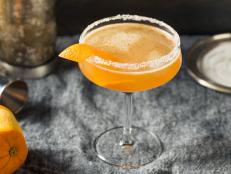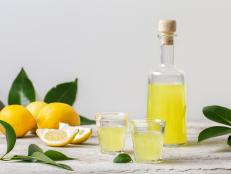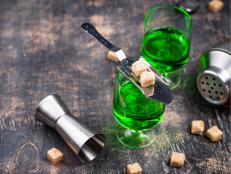What Is Vermouth? And How to Use the Three Main Types
How to stir it into a cocktail, sip it on its own and more.
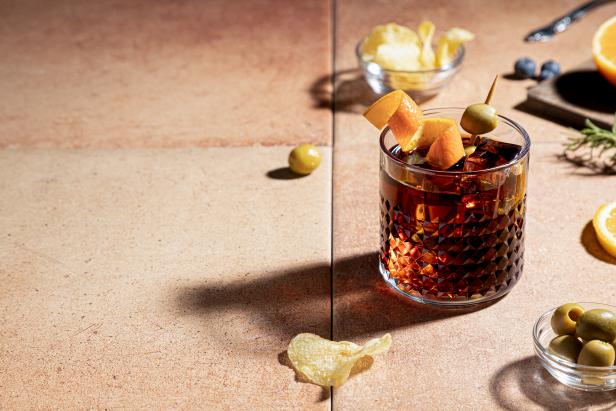
Miguel Tamayo Diaz/Getty Images

If you’re a fan of Negronis or Martinis, you’re likely familiar with vermouth as a key mixer ingredient. But vermouth is also a complex beverage that can be enjoyed on its own, and one that’s popping up on more restaurant and bar menus nationwide. But what exactly is it? To learn more about the different types of vermouth and how to use them, we consulted Katie Button, chef and co-founder, and Félix Meana, chief experience officer, of Katie Button Restaurants, a restaurant group in Asheville, North Carolina that prominently features vermouth.

Westend61/Getty Images
What Is Vermouth?
Vermouth is a fortified, aromatized wine that has been infused with botanicals.
Meana shares that vermouth, or vermu, is a cultural cornerstone in his native Spain. “Everything started in Spain when whole families and friends would mingle in the bars and grab a bite or two, usually olives, chips or tinned seafood, with a glass of vermouth,” he explains. “We call this time on Sunday afternoons before lunch and after church "La hora del vermut" where we can enjoy time together.” Vermouth is prominently featured on the menu at both La Bodega by Curate and Curate, the latter of which includes a ‘vermuteria’ bar area offering vermouths on tap.
“Some are more bitter, some have more warm spices, while some are more floral and fruitier,” Button says, “and I have found that no single vermouth is like any other.”
How Is Vermouth Made?
Vermouth is made by fortifying wine with alcohol, such as brandy or a neutral grain spirit and aromatizing it with fruit, spices and florals. Vermouth comes from the German word Wermut, meaning wormwood, and bitter, aromatic wormwood remains a signature ingredient in most vermouths. The botanicals chosen for infusion vary by producer and region, but other common botanicals include cinchona bark, angelica root, orange peel, juniper, orris root and star anise.
“It's a great way for winemakers to convert wine, that they may not be thrilled with, into something that will taste delicious and last longer since herbs and flavors are added and it's fortified, giving it a longer shelf life,” Button explains. “It's most common and popular in France, Spain and Italy.”
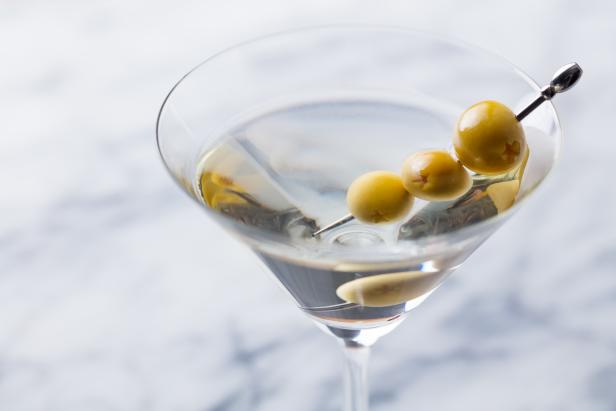
AnnaPustynnikova/Getty Images
Types of Vermouth
There are three main distinct types of vermouth, including dry white, sweet white and sweet red. Here, Button breaks down the different types and their uses.
Dry White Vermouth
Along with the sub-category of extra-dry, dry vermouths begin as white wine and are not sweet. They often contain flavors of fresh green herbs, fennel, nutmeg, bitter orange, lemon, grapefruit and light florals. If you’re wondering “what’s the vermouth in a Martini?” the answer is dry white vermouth. However, Button shares that she prefers swapping in sweet white vermouth in a gin martini to soften and round out the gin’s sharpness.
Sweet White Vermouth
Sweet white vermouths also originate as white wines and have a touch more sweetness than dry vermouths; however, they are not sweet sippers. Some sweet white vermouths might contain flavors of tart apple, citrus, stone fruit blossom, elderflower, thyme and toasted butter. You can enjoy it on the rocks with a twist or topped off with soda water.
Sweet Red Vermouth
These start as red wine and have a sweeter flavor profile. Sweet red vermouths have varying degrees of sweetness depending on how they are prepared. Broadly speaking, sweet red vermouths can contain rich aromas of cola, cinnamon, prune, spice, licorice and vanilla toffee. On La Bodega by Curate’s cocktail menu, the Manhattan uses both red sweet and dry white vermouth. Classically, negronis contain sweet red vermouth.

bhofack2/Getty Images
Vermouth In Cocktails
“Vermouth are used in cocktails to bring depth, added aromatics and sometimes sweetness in the case of a sweet vermouth,” Button says. “They also have a lower ABV than spirits, so they can make a nice light refreshing spritz on their own or lower the alcohol content of a cocktail when mixed with a particular spirit.” Here are some cocktail recipes that use vermouth.
Martini: For this classic shaken cocktail, all you need is chilled gin and dry white vermouth, though we highly recommend a green olive or three for garnish.
Manhattan: Food Network Kitchen’s take on a Manhattan calls for bourbon and bitters plus equal parts sweet Italian vermouth and dry French vermouth.
Negroni Mocktail: This spirit-free Negroni pulls in non-alcoholic versions of gin, aperitivo and vermouth, but to make a regular Negroni, simply stir equal parts gin, Campari and sweet vermouth until chilled. No matter which version you make, don’t skip the classic orange peel garnish.
Rob Roy: A two-to-one ratio of Scotch and sweet Italian vermouth gets shaken then strained into a chilled cocktail glass and garnished with a cherry.
Boardwalk Boss: This stirred cocktail pulls in sweet vermouth and apple brandy to complement the whiskey. A lemon twist finishes it off.
Big-Batch Aperol Manhattan: This riff on a classic gets a Mediterranean twist courtesy of the Italian aperitif, Aperol, but still calls for sweet vermouth to pair with bourbon or rye.
High Tea Cocktail: For an easy-drinking beverage that makes a particularly ideal summertime sipper, stir together cardamom-ginger syrup, black tea, sweet vermouth and gin. To make it more low-alcohol, sub in club soda for the gin.
Manhattan Beer Slushie: This grown-up slushie starts with a beer granita base then mingles bourbon (or rye for a spicier finish) with sweet vermouth and orange liqueur.
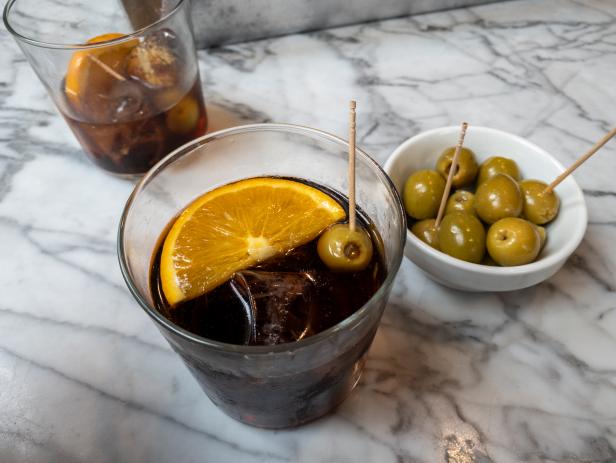
Mario Marco/Getty Images
How to Drink Vermouth On Its Own
With its complexity and range of flavor profiles, vermouth can also be enjoyed on its own as an aperitif, digestif or lower ABV option, either neat or on the rocks. “I love a sweet white or red vermouth on ice with lemon or orange and a green olive,” Button says. “We usually put lemon peel with sweet or dry white vermouth and orange peel with sweet red vermouth. The olive can go in any of them and is delicious along with the citrus peel.”
Vermouth Substitutes
In cocktails, an amaro is often used as a substitute for vermouth. “Amari are not required to be made out of wine so they are different from vermouth, but have some similar qualities like herbal infusions,” Button says. “The bitterness and sweetness that you can find in vermouth make them a good substitute.” She adds that dry sherry, such as Fino, is another good substitute for vermouth in cocktails. To substitute vermouth in cooking, Button advises substituting white wine or a dry sherry, such as a Fino or Manzanilla, in place of dry white vermouth.
Does Vermouth Go Bad?
Vermouth doesn’t go bad, per se, but it will start to lose its aromatics and flavors over time. And too much oxidation can cause vermouth to develop “off” flavors. “Vermouth will start to lose its incredible aromatics in a week or so if you are keeping it out at room temperature. It’s best to store it in the refrigerator where it will last for months and stay delicious,” Button says. “Over time the botanicals and flavors will mellow and reduce, but it will keep for a very long time if refrigerated.”
Related Links:


























